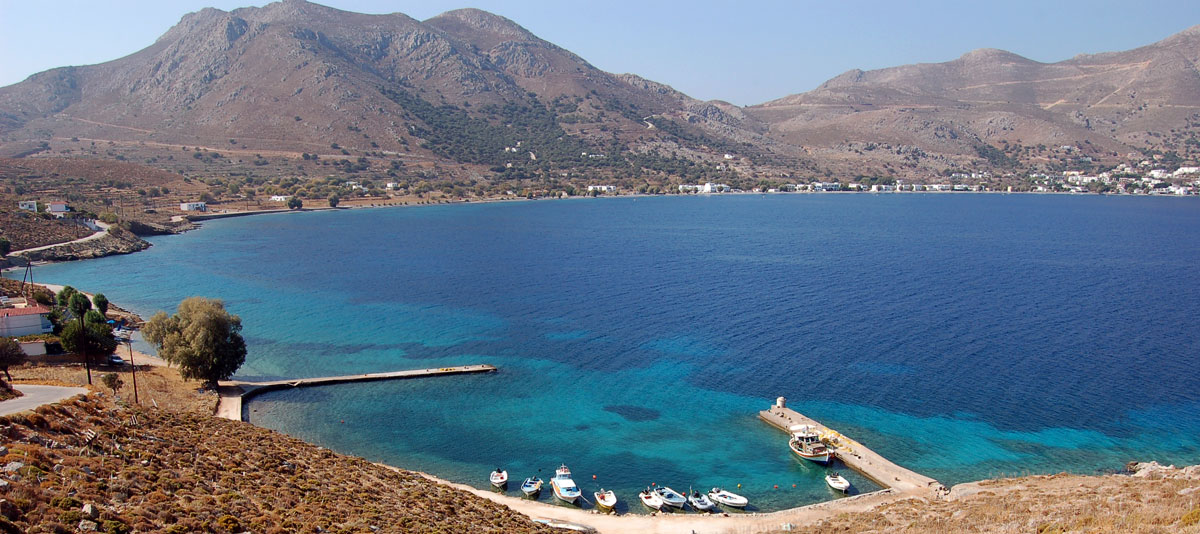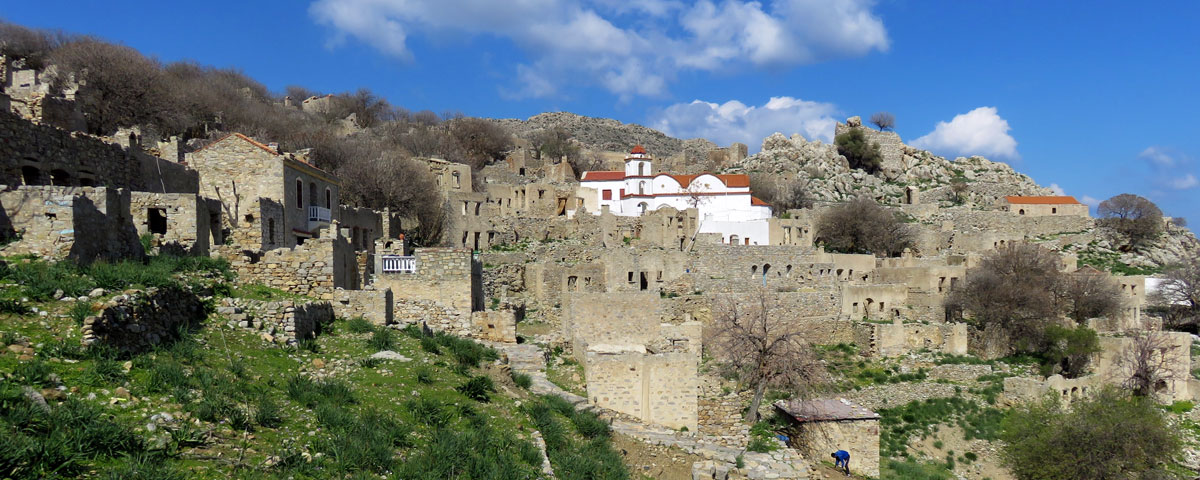
The name “TÍLOS” is very ancient. The island was also known as AGATHOÚSA, but the name TÍLOS prevailed. In the cave of “Charkadió”, bones from dwarf elephants (of height 1.20 – 1.60m) were found that lived on the island around 7000BC. Actually, after this discovery the island was called “Elephant island”.
The island was inhabited from the Mesolithic Age (8000 – 7000BC). During the Bronze Age (2800 – 1100BC) the island was attacked by the Minoans and Myceneans. Tílos took part in the Trojan war with 2 ships and was then conquered by Dorians. The capital of the island was built on the site of Megálo Chorió (there are remains of impressive tower foundations on the side of the mountain, on top of which the ancient Greeks built their houses). The citadel stood on the peak, over the town, where the Venetian castle now stands (there are still materials from the citadel to be seen).
There are graves from 2500BC along the beach in Ágios Antónios. The island thrived in the 7th century BC and founded colonies in Sicily. The great lyricist Írinna (4th century BC) and the well-known tyrants of Sicily, Gélon and Iéron (who were brothers), were born on the island. Indeed, Gélon was extolled by the ancient poet Píndaros as being worthy as the Athenian victors in Salamína and the Spartians in Pataiá, as he overwhelmed the Karchidonians, who were urged by the Persians to attack Sicily (Greater Greece), at the same time that the Persians attacked Greece.
After the Roman rule and the Byzantine Empire, the island came to the hands of the Knights of Ágios Ioánnis of Ródos, who filled the island with castles (14th – early 16th centuries) and then, the Turkish domination started. In the early 20th century, Italians captured Tílos, along with the rest of the Dodekánisa. The island was finally reunited with Mother Greece in 1948.

Tilos is the island of peace and harmony, with its clear atmosphere and beautiful water that enchants us. There are new comfortable asphalt roads that run around the island. It is ideal for walking (34km network of stone pathways) accompanied by the partridges (hunting is forbidden as the island is a site of migratory birds).
Sightseeing: It is worth visiting the cave of Charkadió, the Palaeontological Collection (information from the Town Hall, tel: 44212), the Pelasgic wall of the Megálo Chorió, the Venetian castles and the famous Monastery of Ágio Panteleímonas (15th century). The Monastery and its surrounds are among the nicest areas of the whole island. Its icons date from the 15th century. The ride to the west of the island to reach the Monastery is unique. It cannot be described. Visit it and you will remember me! (ask at the Town Hall if the Monastery is open).
Celebrations: The largest feast here is that commemorating Ágios Penteleímonas (patron saint of the island). The celebrations lasts three days (25 – 27th July). Food and wine is served and the party is of music and dance (it is a real must).
Flavours: Seafood and stuffed goat.





